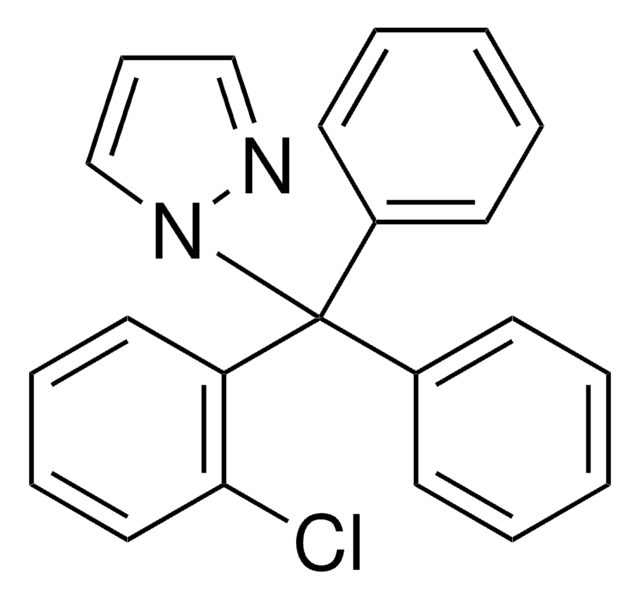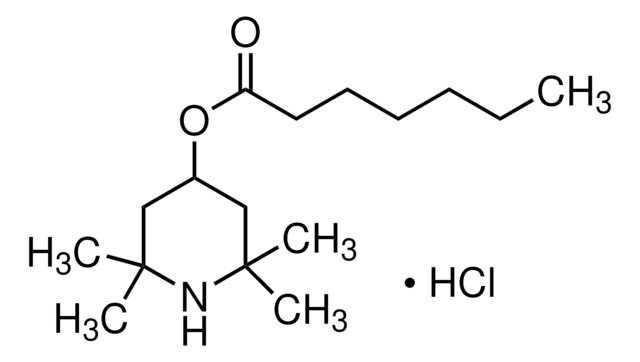L134
Linopirdine
≥98% (HPLC)
Synonym(s):
1,3-Dihydro-1-phenyl-3,3-bis(4-pyridinylmethyl)-2H-indol-2-one, DuP 996
About This Item
Recommended Products
Assay
≥98% (HPLC)
color
white to off-white
solubility
DMSO: >10 mg/mL
ethanol: 240 mg/mL
SMILES string
O=C1N(c2ccccc2)c3ccccc3C1(Cc4ccncc4)Cc5ccncc5
InChI
1S/C26H21N3O/c30-25-26(18-20-10-14-27-15-11-20,19-21-12-16-28-17-13-21)23-8-4-5-9-24(23)29(25)22-6-2-1-3-7-22/h1-17H,18-19H2
InChI key
YEJCDKJIEMIWRQ-UHFFFAOYSA-N
Gene Information
rat ... Kcnj1(24521)
General description
Biochem/physiol Actions
Legal Information
Storage Class Code
11 - Combustible Solids
WGK
WGK 3
Flash Point(F)
Not applicable
Flash Point(C)
Not applicable
Personal Protective Equipment
Certificates of Analysis (COA)
Search for Certificates of Analysis (COA) by entering the products Lot/Batch Number. Lot and Batch Numbers can be found on a product’s label following the words ‘Lot’ or ‘Batch’.
Already Own This Product?
Find documentation for the products that you have recently purchased in the Document Library.
Our team of scientists has experience in all areas of research including Life Science, Material Science, Chemical Synthesis, Chromatography, Analytical and many others.
Contact Technical Service








